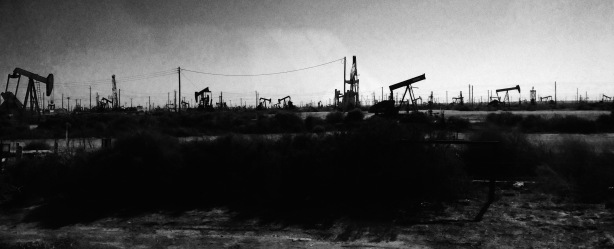Good Friday
Each time we stretch out our arms in love to one another,
every time we open our hearts,
we find the shadow of the cross,
but also a glimpse of the open tomb.
We are nailed indeed.
It is our keenest grief, and our deepest joy.
(from “Good Friday: In Which We Get Nailed”
The Painted Prayerbook, Jan Richardson, March 2008)
Here we are at Good Friday, the middle of the service of the Triduum, and — I don’t know about you — but each year I approach it with greater awe.
That he can still speak [to the world].
That in the depths of his pain and his dying, he does not cease to say what he needs to say.
That as he lets go, he leaves them with words of comfort and release, of lamentation and love.
Forgive. You will be with me. Behold. Forsaken. Thirst. Finished. Into your hands.
Knowing that these are his last words, but not his final ones.
That after this, there will be a span of silence. And that soon the silence will come to an end.
For now, we watch, we weep, we bear witness, we wait.[1]

There are moments in our lives that have such impact that they take our breath away, if only for a short time, but in a way that allows us to re-call that memory, time and time again. The feelings and the faith that fill me on Good Friday make up just this kind of memory for me. There is a rawness and a beauty, an intensity and an embodiment of that word “passion” that pulses with God-ness. Since I was a child, I have been captured by the action of the day: the imagined sound of nails, the grief-stricken hearts of friends, the fear of association, and then the darkness and the curtain of the inner sanctuary — the gateway to the holy of holies — torn. I wonder, was it torn as we reached in, reached for God… or as God reached out, for us?
And on this day, I confess that I am struck by the power with which I feel both loved and lonely, all at the same time. Indeed, when we sing together “What wondrous love is this?” it becomes for me a declaration of my recognition of the sacrifice demanded by injustice, the love spent in the dream of a different world, and of the indifference that keeps the crucifixion of goodness happening over and over again. Frustration, disappointment, anger… all of these could easily define each Good Friday, each retelling of the execution, each nod to despair. But even in saying this, I realize that the ‘good’ of this Friday is in the potential for renewal.
I believe the cycle of renewal is unveiled in each Holy Week, even each day within Holy Week. The contrasting parades into the holy city — emperor and peasant — remind us whose we are in this world. The meal between friends, our leader and lord employing the servant towel, and now this: the moment we recognize the humanity — and thus the fragility and mortality — of the Rabbi, of Jesus. And these holy moments become a microcosm of real living, wholly and holy, throughout our lives. That cycle is the sacred flow of life and death, the movement of faith and doubt, the revolution through breaking down, bringing back together, refreshing and renewing.
And the revolution is so necessary. The journey to the centre of the cross — the demand that we travel through life, not skirt around it on tidy and safe edges — is where we immerse ourselves in our humanity and, as the poet said, we open our hearts and find the shadow of the cross. We cannot stop the story at any one point, especially in the breaking down. But we can pause here. We can remember. We can tell the tale. We can confess to our own discomfort, our own sadness, our own anxiety, our own humanness. But we never, we NEVER have to live that first day again. Because there was movement. And the tomb was filled, and Jesus was swaddled again — this time in the spiced linens of death — and we thought it was over. We never have to live it again, because then the stone was rolled away — again, leaving me wondering if it was us reaching in for holiness or holiness reaching out for us — and then the women came and then the tomb was empty and then a heart pounded with the recognition of Love and Mary could call out, “I have seen the Lord.” But it is a cycle. It is a revolution.
So today, again, for now, we watch, we weep, we bear witness, we wait.
That after this, there will be a span of silence. And that soon the silence will come to an end.
Knowing that these are his last words, but not his final ones.
Forgive. You will be with me. Behold. Forsaken. Thirst. Finished. Into your hands.
That as he lets go, he leaves us with words of comfort and release, of lamentation and love.
That in the depths of his pain and his dying, he does not cease to say what he needs to say.
That he can still speak to the world.
And the language is love.
[1] Jan Richardson. Good Friday: Speaking, Still. (http://paintedprayerbook.com/2018/03/27/good-friday-speaking-still/).
(more…)
